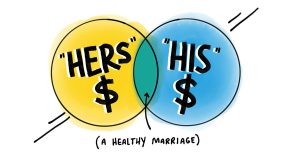Unrealized gains and losses are potential gains and losses from an investment that has not yet been sold. While selling investments can have tax consequences, that may not be true while you still hold on to it. That’s why they are “unrealized.”
Selling investments can significantly impact your taxes, so it’s crucial to understand the potential implications. You should also understand the difference between realized and unrealized gains or losses. We’ll cover these differences and what they mean for you as an investor.
What is an unrealized gain/loss?
An unrealized gain or loss is the change in value of a stock, bond or other asset you have purchased but not yet sold. The gain or loss is “unrealized” or “on paper,” as some refer to it, because you are still holding the investment. The gain or loss is only determined or “realized” when you sell the asset.
One reason we discuss unrealized gains and losses is the potential tax implications once the investment is sold. We will discuss taxes at greater length in another section, but generally, realized gains result in a capital gains tax, while realized losses allow investors to offset their taxes.
How unrealized capital gains and losses work
Investment values constantly fluctuate, regardless of the investment type. Whether the investment has increased or decreased will determine if you have unrealized gains or unrealized losses. You will have unrealized gains if the asset’s value has increased since you purchased it. Conversely, if the asset’s value has decreased, they have an unrealized loss.
As long as losses or gains are unrealized, they have no real-world impact. It’s only when selling an investment you must pay or be able to reduce your taxable income. It’s important to show this when reporting your capital gains or losses to the IRS. If you realize a gain, you typically must pay either a short-term or long-term capital gains tax, depending on how long the investment was held.
Whether you decide to sell an investment with unrealized gains or losses depends on the situation. For instance, if an investment has unrealized capital gains, you might sell it to lock in your profit or you may hold onto it longer to defer taxes. Alternatively, you might hold an investment with capital losses to wait until it increases in value or you might sell it to offset other gains. It largely depends on your needs, goals and the other investments in your portfolio.
Calculating unrealized gains and losses
Given the frequent fluctuation in investment values, you’d need to do some calculations to determine whether you have unrealized gains or losses. Fortunately, the calculation is usually just a simple subtraction. First, determine the investment’s purchase price and current market value.
If the current market value is higher, you have a capital gain. If the purchase price is higher, you have a capital loss. Subtract the smaller number from the larger number to get your total capital gain or loss.
Example of an unrealized gain
Suppose you purchased an investment for $5,000 one year ago. Since then, your investment has grown to $7,500. Because the purchase price is lower, you know you have a capital gain. Subtract $5,000 from $7,500 to get $2,500. This means you have an unrealized capital gain of $2,500.
Example of an unrealized loss
Imagine you purchased an investment for $2,000 six months ago. Since then, the market value has fallen to $1,750. You know you have an unrealized loss because the purchase price is higher. Subtract $1,750 from $2,000 to get $250. This means you have an unrealized capital loss of $250.
Realized vs. unrealized gains and losses: How they differ
The main differences between unrealized gains and losses lie in their tax implications and what they mean for your investment performance. If you have an unrealized gain, you see this as an increase in your net worth. It also means your investment has experienced gains since you purchased it, which may indicate strong performance.
Conversely, an unrealized loss will reflect a drop in your net worth. Struggling returns may indicate that your investment is underperforming compared to your expectations. Of course, investors don’t generally buy a stock or bond expecting its value to decrease. Nevertheless, this does happen, sometimes for an extended period. You have an unrealized loss as long as the market value is lower than the purchase price.
How taxes work for unrealized gains and losses
The tax treatment for unrealized gains and losses depends on whether you have a gain or loss when you sell. If you sell an investment with a capital gain that you held for up to one year, these are short-term capital gains, which are taxed as ordinary income (your personal income tax rate). You will have long-term capital gains if you hold the investments for a year or longer. Depending on your income, these are taxed at 0 percent, 15 percent, or 20 percent.
If your capital loss is larger than your capital gain, those losses can reduce your taxable income by up to $3,000 per year. In some cases, your total capital losses might exceed $3,000. When this happens, you can carry your losses into future tax years, known as a tax loss carryover.
Bottom line
The market value of investments like stocks and bonds naturally fluctuates over time. If you are holding onto these or other kinds of investments, you likely have unrealized gains or losses. However, unrealized gains or losses have no real-world impact until you sell the investment, known as realizing your capital gain or loss.
You will often owe some tax when selling investments, but the rate can sometimes be 0%, or it may even reduce your tax bill. This depends on factors like your income and whether you had an overall capital loss. You usually pay taxes on capital gains, but minimizing the tax impact is possible with strategies like tax-loss harvesting.
Read the full article here










